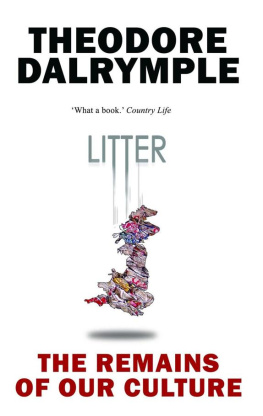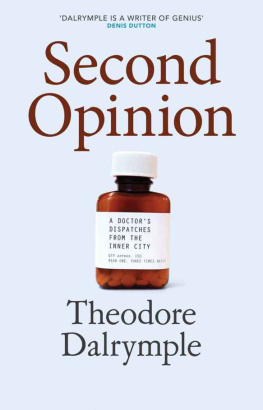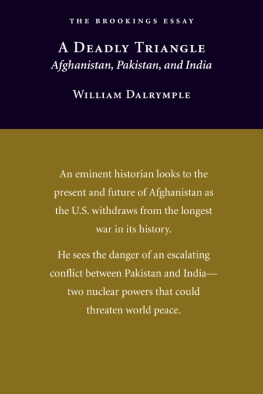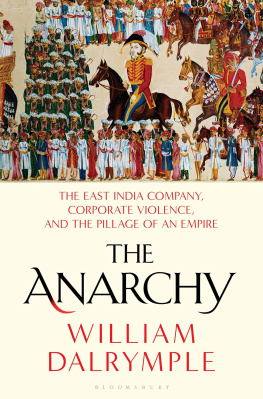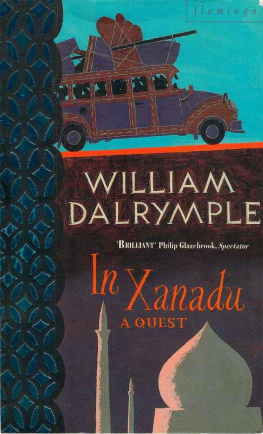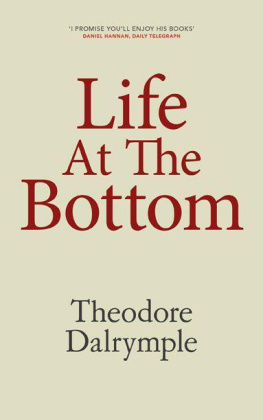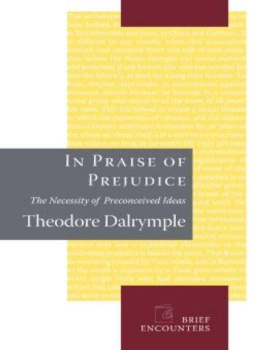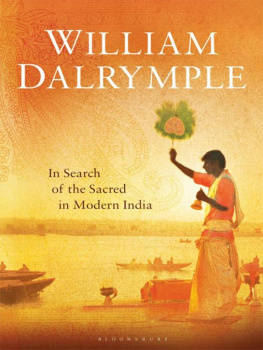Dalrymple - Return of a King
Here you can read online Dalrymple - Return of a King full text of the book (entire story) in english for free. Download pdf and epub, get meaning, cover and reviews about this ebook. year: 2013, publisher: Bloomsbury UK, genre: Non-fiction. Description of the work, (preface) as well as reviews are available. Best literature library LitArk.com created for fans of good reading and offers a wide selection of genres:
Romance novel
Science fiction
Adventure
Detective
Science
History
Home and family
Prose
Art
Politics
Computer
Non-fiction
Religion
Business
Children
Humor
Choose a favorite category and find really read worthwhile books. Enjoy immersion in the world of imagination, feel the emotions of the characters or learn something new for yourself, make an fascinating discovery.

- Book:Return of a King
- Author:
- Publisher:Bloomsbury UK
- Genre:
- Year:2013
- Rating:5 / 5
- Favourites:Add to favourites
- Your mark:
- 100
- 1
- 2
- 3
- 4
- 5
Return of a King: summary, description and annotation
We offer to read an annotation, description, summary or preface (depends on what the author of the book "Return of a King" wrote himself). If you haven't found the necessary information about the book — write in the comments, we will try to find it.
Return of a King — read online for free the complete book (whole text) full work
Below is the text of the book, divided by pages. System saving the place of the last page read, allows you to conveniently read the book "Return of a King" online for free, without having to search again every time where you left off. Put a bookmark, and you can go to the page where you finished reading at any time.
Font size:
Interval:
Bookmark:

To my beloved
Adam
And also to the four people who did most to encourage in me a love of history:
Veronica Telfer
Fr Edward Corbould OSB
Lucy Warrack
and
Elsie Gibbs
(North Berwick, 10 June 1922 Bristol, 4 February 2012)
Great kings have always recorded the events of their reigns, some writing themselves, with their natural gifts, but most entrusting the writing to historians and writers, so that these compositions would remain as a memorial on the pages of passing time.
Thus it occurred to this humble petitioner at the court of the Merciful God, Sultan Shuja al-Mulk Shah Durrani, to record the battles and events of his reign, so that the historians of Khurasan should know the true account of these events, and thoughtful readers take heed from these examples.
Shah Shuja, Waqiat-i-Shah Shuja
C ontents



THE AFGHANS
The Sadozais
Ahmad Shah Abdali (172272): Born in Multan, Ahmad Shah rose to power in the service of the Persian warlord Nadir Shah. On the latters death, Ahmad Shah seized control of the Shahs chest of Mughal jewels, including the Koh-i-Nur diamond, and used it to fund the conquest of Kandahar, Kabul and Lahore, then later launched a series of lucrative raids into India. Taking the title Durrani (Pearl of Pearls) he created an empire that was built out of the collapse of three other Asian empires the Uzbeks to the north, the Mughals to the south and to the west the Safavids of Persia. At its height it extended from Nishapur in modern Iran through Afghanistan, the Punjab and Sindh to Kashmir and the threshold of Mughal Delhi. Ahmad Shah Abdali died after contracting a tumour which ate away his nose and finally attacked his brain.
Timur Shah (r. 177293): Son of Ahmad Shah Abdali and father of Shah Mahmoud, Shah Zaman and Shah Shuja. Timur successfully maintained the Afghan heartlands of the Durrani Empire his father had bequeathed to him, but he lost the Persian and Indian extremities. It was he who moved the capital from Kandahar to Kabul, to keep it out of the turbulent Pashtun heartlands. At his death, his legacy was violently disputed by his twenty-four sons, throwing the Durrani Empire into civil war.
Shah Zaman (r. 17931800, d. 1844): Shah Zaman succeeded his father Timur Shah in 1793, attempting with limited success to save his grandfathers Durrani Empire from collapse. Having been thwarted in an attempt to invade Hindustan in 1796, he lost control of his dominions and was captured and blinded by his twin enemies, the Barakzai clan and his half-brother Shah Mahmoud, in the winter of 1800. Released by Shah Shuja at his accession in 1803, he lived in Kabul until he was forced to flee to India after the defeat at Nimla in 1809. He came back to Afghanistan in 1841 and briefly joined Shuja for the uprising in Kabul. The following year, after his brothers assassination, he left Afghanistan for the last time, returning to exile in Ludhiana where he died in 1844. He was buried at the Sufi Shrine in Sirhind.
Shah Shuja (17861842): Shuja first rose to prominence after his elder brother Shah Zaman was captured and blinded by his enemies in 1800. Escaping arrest, he wandered the mountains until returning to seize power in Kabul during sectarian riots in 1803. His rule lasted until his defeat by the Barakzais and his half-brother Shah Mahmoud at the Battle of Nimla in 1809. For several years he then wandered north India as a fugitive, stripped of his wealth and, in 1813, of his most precious possession, the Koh-i-Nur. In 1816 he accepted the offer of asylum in Ludhiana extended by the British East India Company. Three failed attempts to retrieve his throne were finally followed by a successful fourth attempt in 1839, but this time he was installed as a puppet ruler by the Company, who decided to place him back in Kabul to further their own strategic ends; when he tried to exercise independent sovereignty, the British quickly marginalised and humiliated him. In November 1841, at the outbreak of the Kabul uprising, Shuja refused offers to take over the leadership of the rebellion and unlike the British in the cantonment, successfully held his own in the Bala Hisar. By February 1842, after the British army in Kabul had abandoned him and marched off to its own destruction, it looked as if Shuja might manage to keep his throne through manipulation of the different rebel factions; but he was assassinated by his own godson on 5 April, and with his death the rule of the Sadozais ended and the Barakzais took power.
Shah Mahmoud (r. 18003, 180918; d. 1829): Shah Mahmoud succeeded in seizing control of Kabul in 1800 after the blinding and capture of his half-brother Shah Zaman. He ruled until he was overthrown by his other half-brother Shah Shuja in 1803. Shuja chose not to blind Mahmoud, only to imprison him. When Mahmoud escaped from the Bala Hisar in 1808, he joined forces with his brothers Barakzai rivals and led a successful rebellion, defeating Shuja at the Battle of Nimla in 1809. He ruled what was left of the Durrani dominions until 1818 when he blinded, tortured and killed his over-mighty Barakzai wazir, Fatteh Khan, and was in turn ousted from Kabul by Fatteh Khans outraged brothers. Shah Mahmoud clung on in Herat until his death in 1829, when he was succeeded by his son Prince Kamran Shah Sadozai of Herat (r. 182942) , who ruled until deposed and strangled by his powerful wazir , Yar Mohammad Alikozai (r. 184251) in 1842.
Prince Timur, Prince Fatteh Jang, Prince Shahpur and Prince Safdarjang: These were all sons of Shah Shuja, the first three by Wafa Begum. None of them inherited their fathers ambition or their mothers ingenuity, and Prince Timur was renowned as an especially uncharismatic figure. Prince Fatteh Jang was remembered mainly for the homosexual rapes he inflicted on members of his own garrison in Kandahar. He ruled in Kabul for five months after the death of Shah Shuja, and abdicated in October 1842 after learning that the British would not stay to keep him in power. He handed over to his younger brother Prince Shahpur , who ruled for less than a month before being expelled by his own nobles at the request of Wazir Akbar Khan. The darkly beautiful Prince Safdarjang, Shujas son by a Ludhiana dancing girl, was little more effective. All four princes died in exile in Ludhiana, having failed to retain the throne after the departure of the British.
The Barakzais
Haji Jamal Khan (d. 1771): Topchibashi, or commander of artillery, to Ahmad Shah Abdali. A rival of Ahmad Shah Abdali after the death of Nadir Shah, he accepted Abdalis elevation after the latter received the blessing of the ulema, and he gave his support to Abdali in return for a commanding role in the army.
Payindah Khan (r. 177499): Son of Haji Jamal Khan, Payindah Khan was the most powerful noble in Timur Khans durbar and it was his support that enabled Shah Zaman to rise to power. The two fell out over Shah Zamans attempts to limit the power of the hereditary nobility, and when Payindah Khan attempted to engineer a coup to replace Shah Zaman, the Shah had him executed in 1799. Far from bringing down the power of the Barakzais, however, the execution ultimately led instead to the fall of Shah Zaman and the rise of Payindah Khans twenty-one sons, especially the eldest, Wazir Fatteh Khan and his younger brother and ally, Dost Mohammad Khan. The killing of Payindah Khan began the blood feud between the Barakzais and the Sadozais which would cast a shadow over the region for half a century.
Next pageFont size:
Interval:
Bookmark:
Similar books «Return of a King»
Look at similar books to Return of a King. We have selected literature similar in name and meaning in the hope of providing readers with more options to find new, interesting, not yet read works.
Discussion, reviews of the book Return of a King and just readers' own opinions. Leave your comments, write what you think about the work, its meaning or the main characters. Specify what exactly you liked and what you didn't like, and why you think so.


